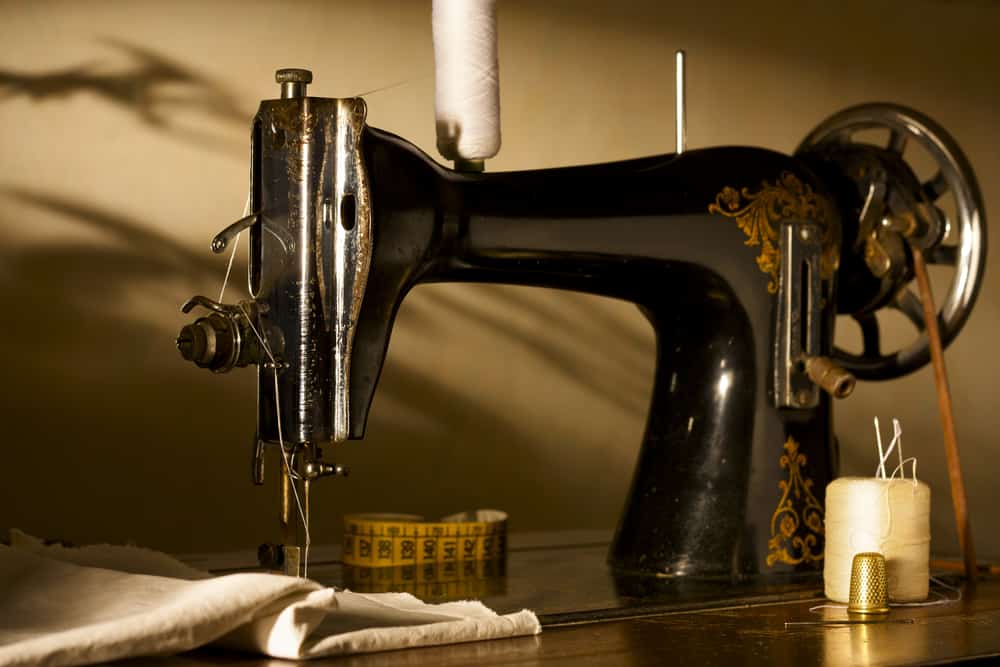Have you recently discovered a passion for sewing and want to discover what it would be like to sew with an antique sewing machine? Have you always wanted to buy a vintage sewing machine but weren’t sure what to look for?
This article will help educate you about the history of sewing machines, tell you which brands are popular and trustworthy, give you recommendations on sewing machines to buy, and finally provide handy tips for when you’re shopping for a vintage sewing machine.
I was excited to delve into this topic as I was given a vintage sewing machine that belonged to my grandmother, and it was insightful to learn how it worked and what it was capable of producing.
Table of Contents
History of Sewing Machines
Sewing has been a method of crafting garments and furnishings for over 20000 years. According to Thought Co, cavemen used animal bone or horns and sinew as needles and thread.
Early Sewing Machines
Needles made specifically for sewing machines were patented by German inventor Charles Weisenthal in 1755 – before the sewing machine was officially invented during the Victorian era.
There was a patent issued to Thomas Saint in 1790 for an invention of a sewing machine, but the design was found to be faulty upon testing.
Other failed attempts:
- In 1804, France issued a patent to Thomas Stone and James Henderson for a ‘machine that emulated hand sewing’.
- In the same year, a similar invention embroidered fabric with multiple needles made by Scott John Duncan was also patented. Neither of the machines functioned well.
- In 1810, a German man called Balthasar Krems made a machine for mechanically sewing caps, but he never got it patented.
- In 1814, Austrian tailor Josef Madersperger was finally granted a patent for a sewing machine after many attempts, but this also failed.
- Finally, in 1818, an American patent was granted to John Adams Dodge and John Knowles, but their invention was notorious for malfunctioning.
The first functioning sewing machine was invented in 1830 by French tailor Barthelemy Thimmonier. His machine had a single thread, a hooked needle, and produced the same chain stitch that was used in embroidery.
His success wasn’t lasting because other tailors feared unemployment, so they burnt down Thimmonier’s factory in anger, nearly killing him.
Sewing Machines from 1834 to 1905
1834 saw the invention of a sewing machine by Walter Hunt in America that could only sew straight seams. It wasn’t patented, as he was worried about causing unemployment.
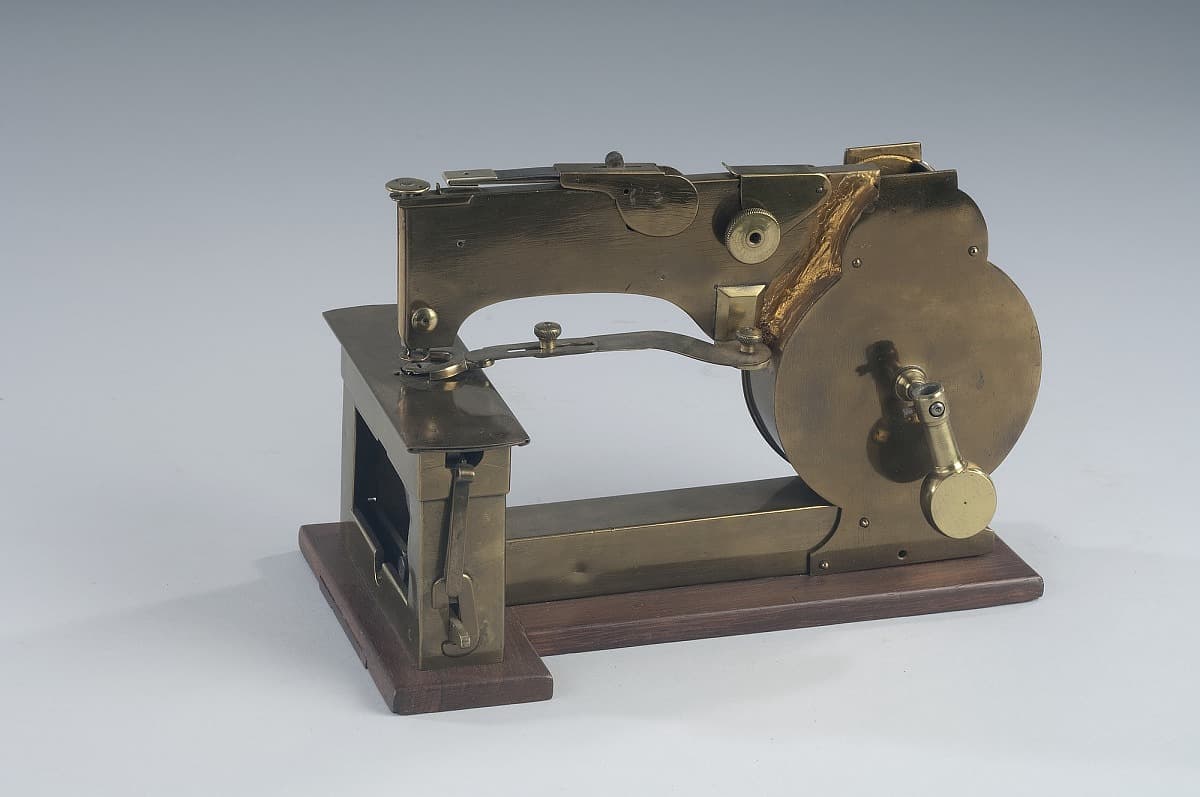
In 1846, Elias Howe was granted an American patent for a hand-cranked machine that used two different threads at once. His machine used a needle with an eye at the tip that moved from side to side, and this created the lockstitch.
This is where a needle goes through a piece of cloth to create a loop on the other side. Then, a shuttle on a track guides a second thread through the loop.
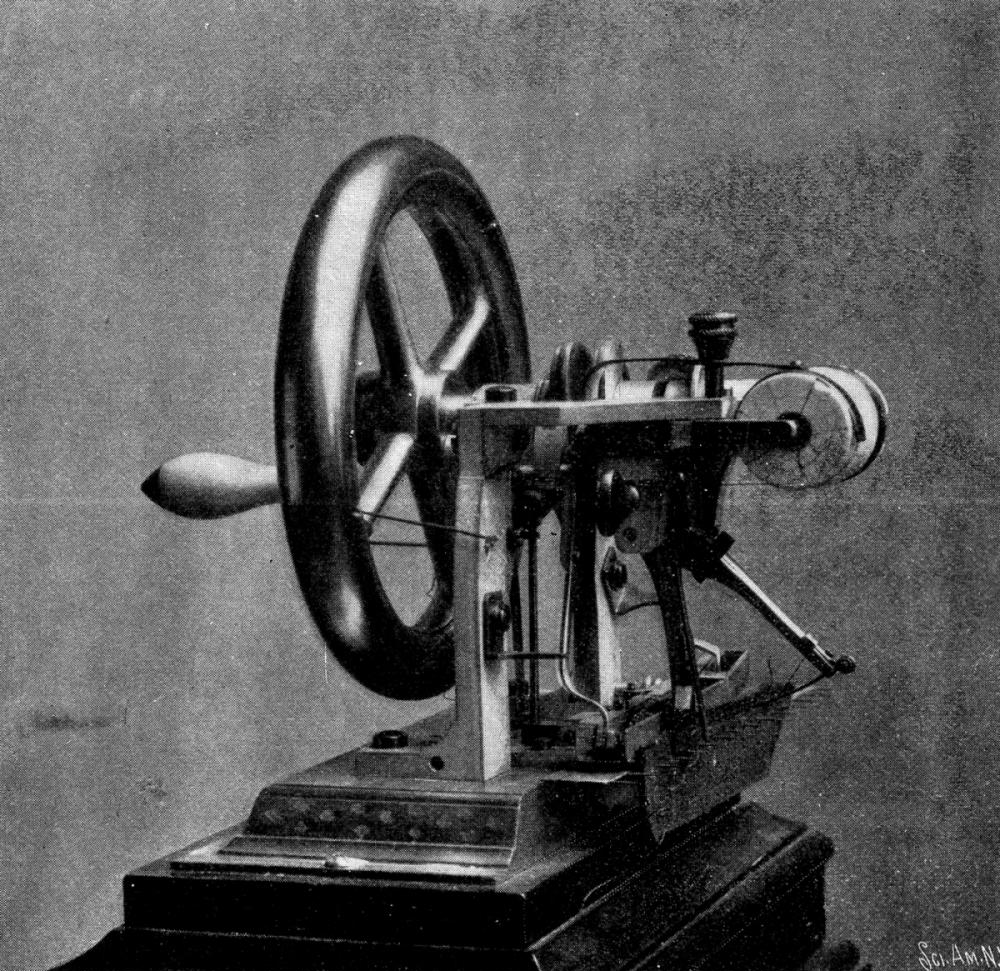
The 1850s saw the invention of the first mass-produced sewing machine by Isaac Singer. They are famous for being the first sewing machine that had a needle move up and down, and a presser foot that powered the treadle machine.
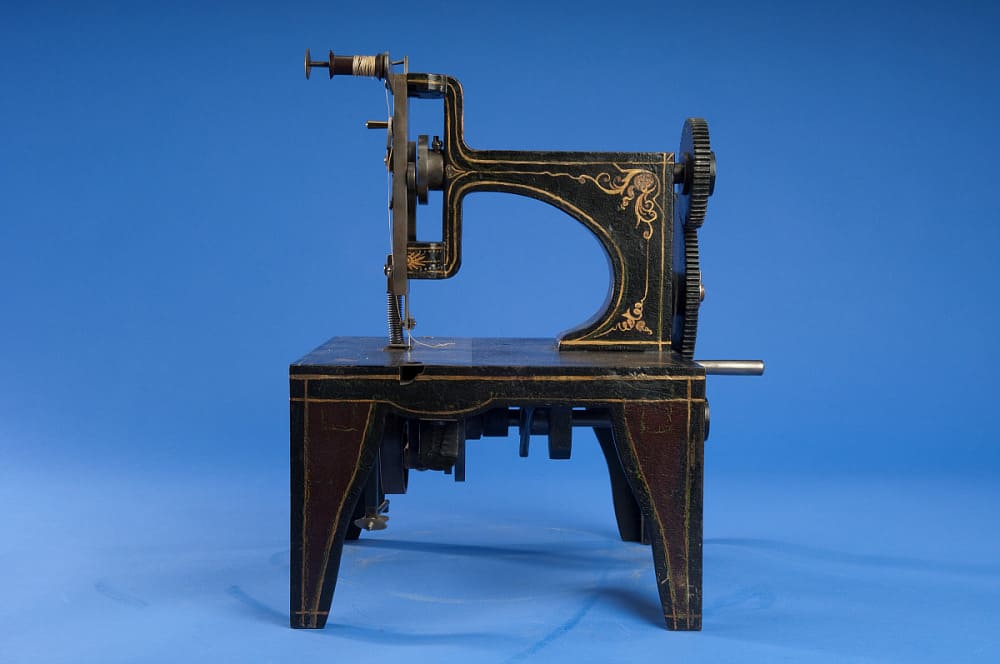
Singer faced a lawsuit due to the machine using the same design as Howe’s patented machine. Howe won the suit in 1854 and was paid patent royalties as a result.
In 1857, James Gibbs was granted a patent for the first straight stitch sewing machine that used a single thread.
In 1873, a woman named Helen Augusta Blanchard patented a sewing machine that produced a zig-zag stitch.
In 1889, mechanical sewing machines were sold to the domestic market for the first time.
Finally, 1905 saw the electric-powered sewing machine being widely available for commercial and consumer use.
Well-known Brands of Sewing Machines
Well-known brands of sewing machines tend to be those who have been in business for a long time, who produce quality machines that don’t easily malfunction and have stood the test of time. Silver Bobbin lists some of the most popular brands around today:
Singer
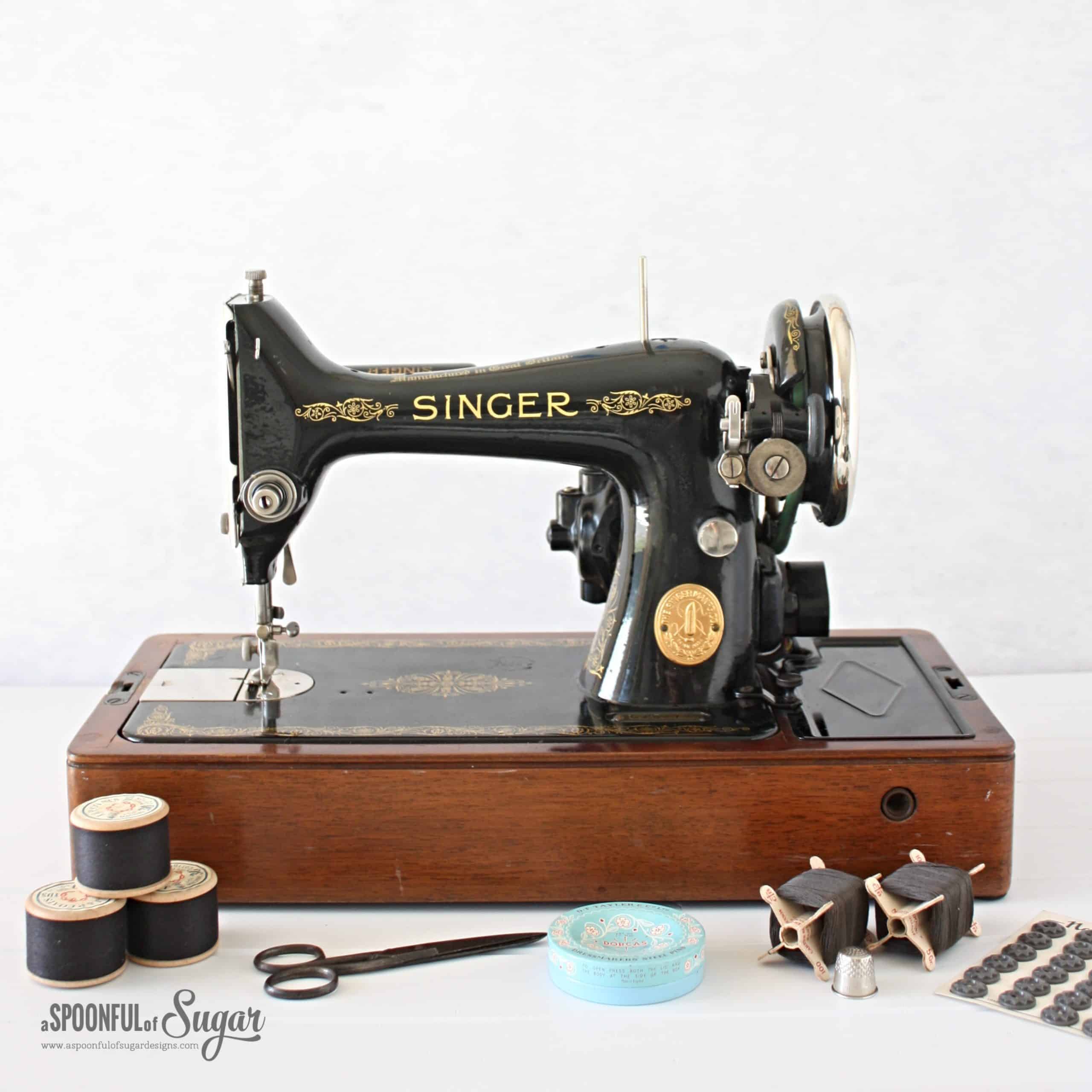
Singer sewing machines are probably the most well-known brand as they are a household name worldwide. It is still an American-based company, but they have now outsourced its factories to other countries.
The company continues to produce sewing machines suitable for beginner to intermediate sewers to this day, and their older vintage models can sell for a high price.
Brother
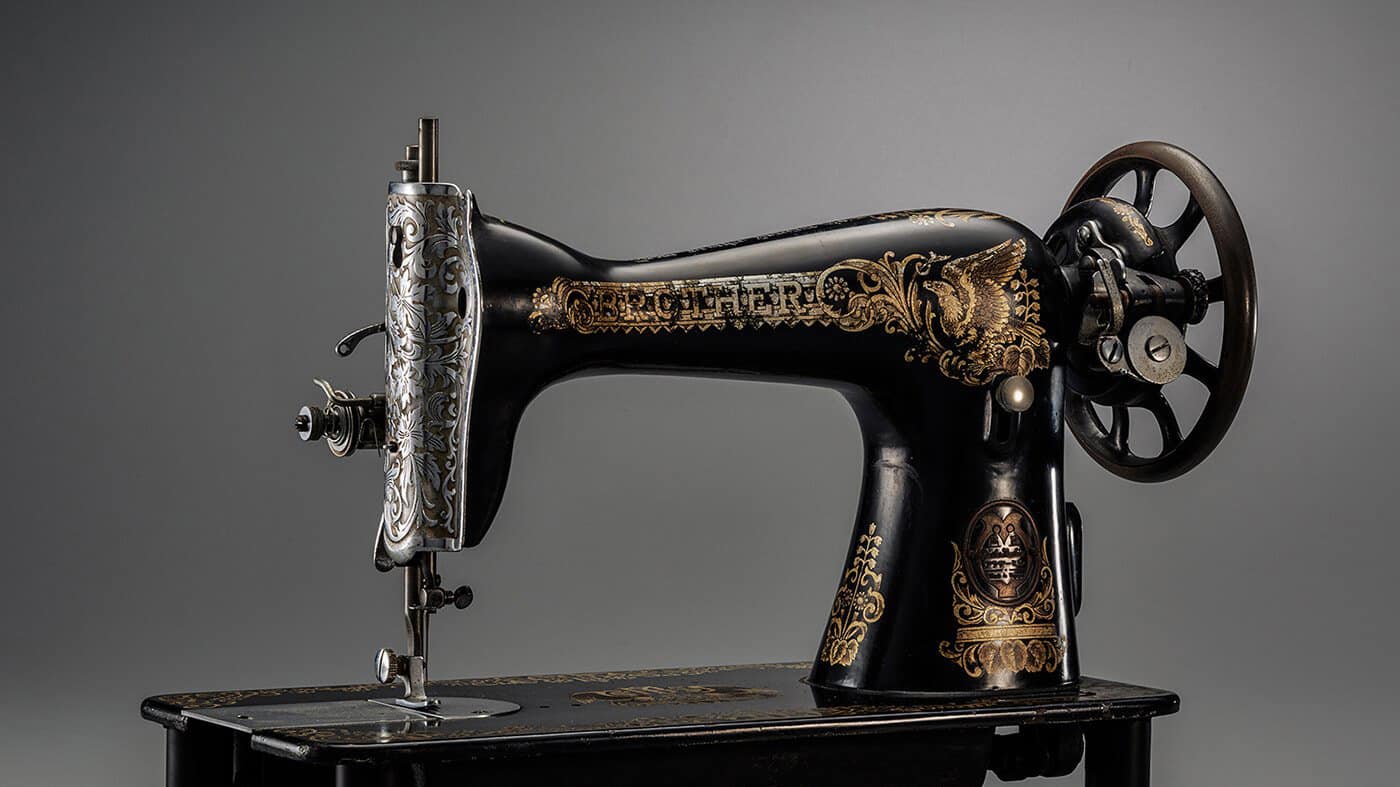
Brother Industries are a Japanese sewing machine brand that have been in business since 1908. They began as a manufacturer of industrial sewing machines, but moved into the domestic market shortly after World War I.
One of the owners of the company is credited for inventing the shuttle hook design during the 1930s that is used in most sewing machines produced today. They are a reliable brand with a huge customer base spanning over 40 countries.
Bernina
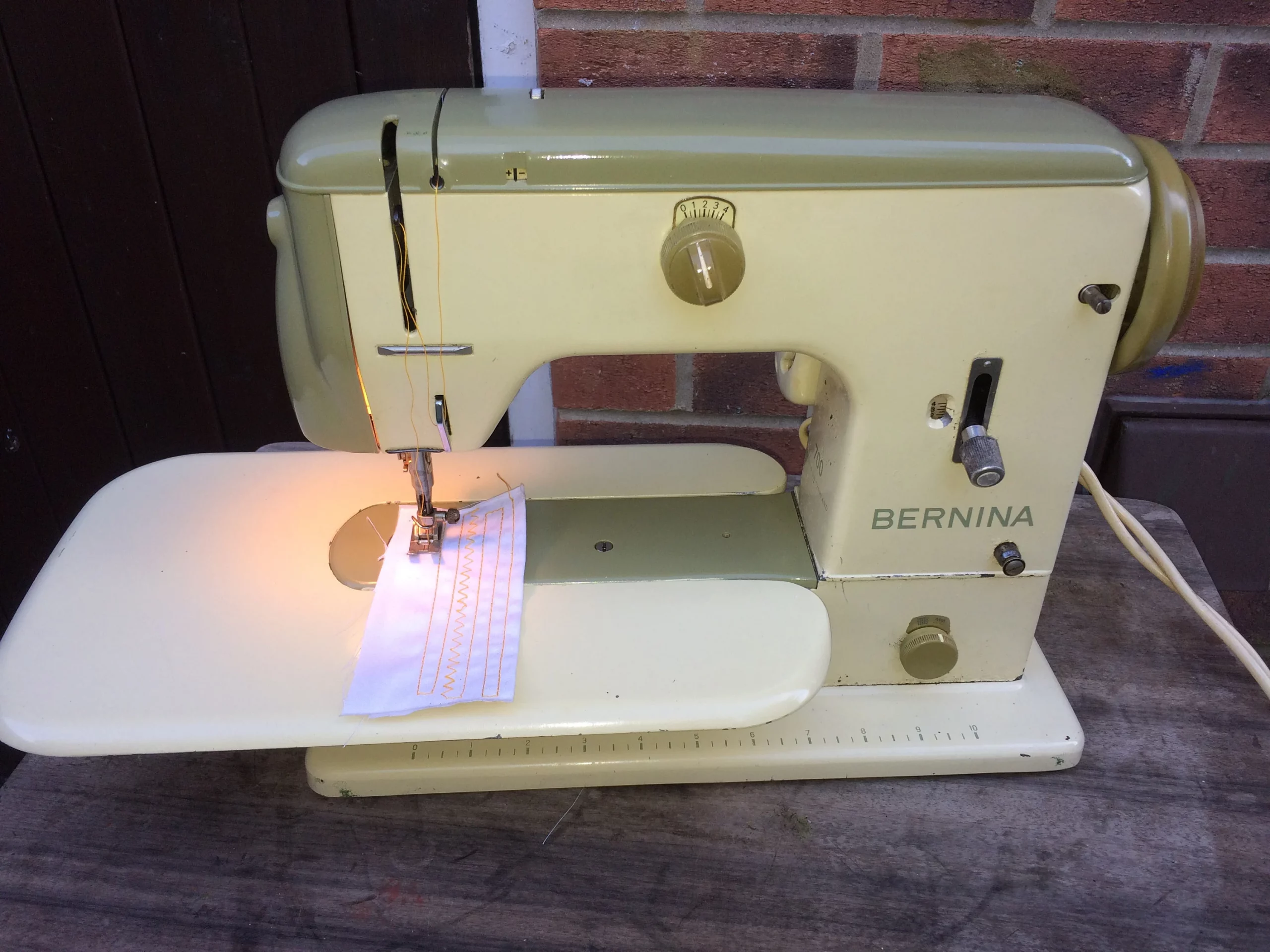
Bernina are a Swiss company who manufacture sewing machines. The company was established in 1893 when the founder invented the hemstitch sewing machine. Bernina began as a family company and is still a private company today.
Unlike the other brands, Bernina has kept up with the advances of modern technology. Some of their latest models incorporate technology such as digital control pads that can be accessed via a smartphone or tablet.
Their older models are said to be reliable, with some in the sewing community believing it to be the best in the world.
Pfaff
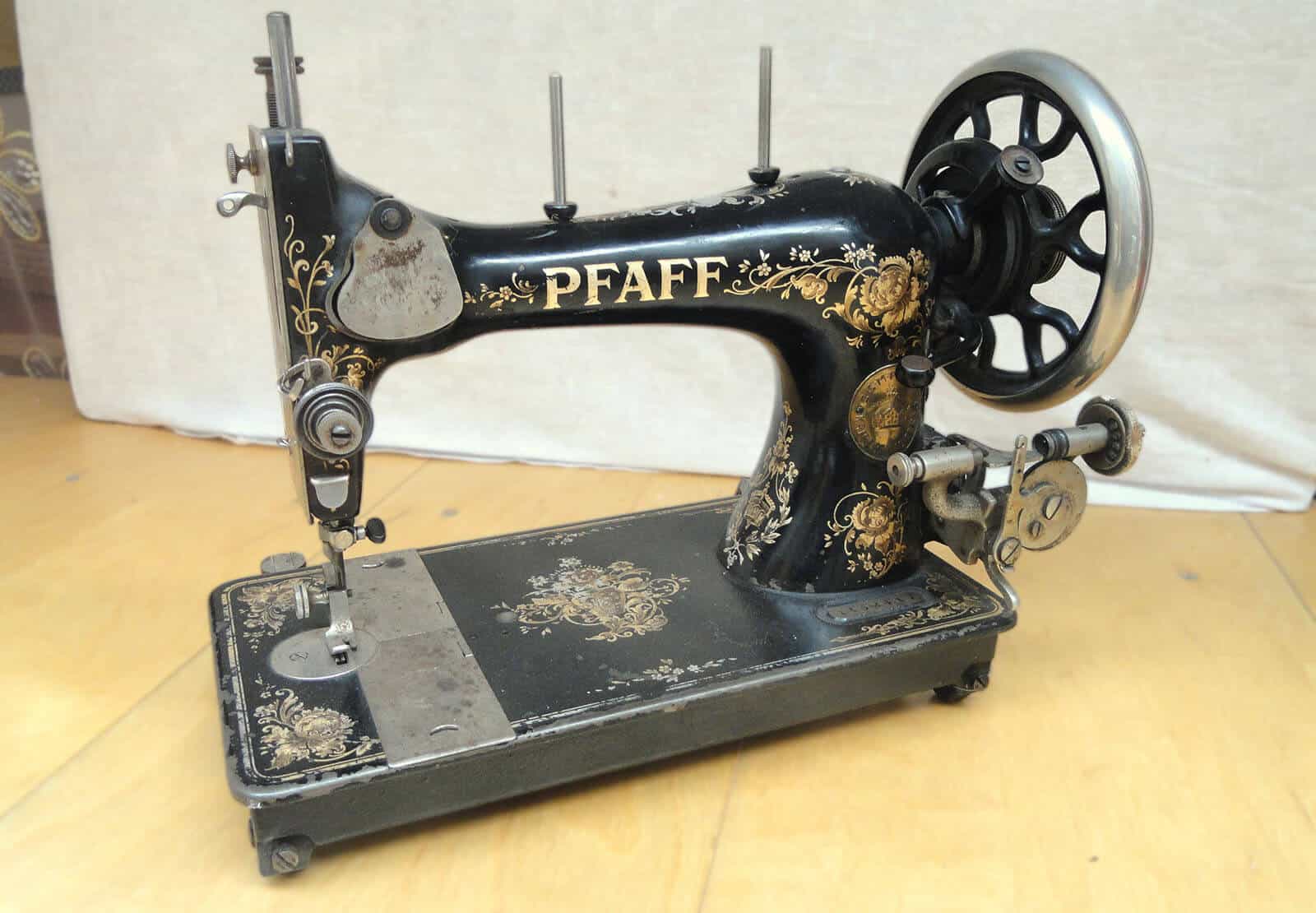
Pfaff is a German company that was founded in 1862 and has a strong reputation for producing high-quality sewing machines with strong durability. Older machines can sew through thick material such as canvas, leather, or denim.
Though it isn’t as well known as the other three brands, their longevity, their invention of a process that ensures fabric is fed smoothly and evenly into the machine called Integrated Dual Transportation, and their precise nature make them one of the best in history.
The Best Vintage Sewing Machines
So, now we’ve covered the history of sewing machines and listed four of the best-known brands, what are the best vintage sewing machines available on the market today? Remember that a vintage sewing machine is anything made from 1900 to 1970.
Love to Know Antiques, Silver Bobbin, and Mermaids Den have compiled lists of the best vintage machines based upon their durability, how easy they are to operate, their price, and other important factors. Below are my top 7 picks from these lists:
Singer Featherweight
- The Singer Featherweight is a popular beginner’s sewing machine thanks to its compact size and how easy it is to use.
- It is made from lightweight aluminium and has its own portable carry case, ideal for travelling.
- It is almost silent, can perform a simple straight stitch, and has a small motor to power the treadle.
- They were manufactured between 1933 to 1968, so the characteristics of the model will vary depending on when it was made.
- They currently sell for around £300-£700.
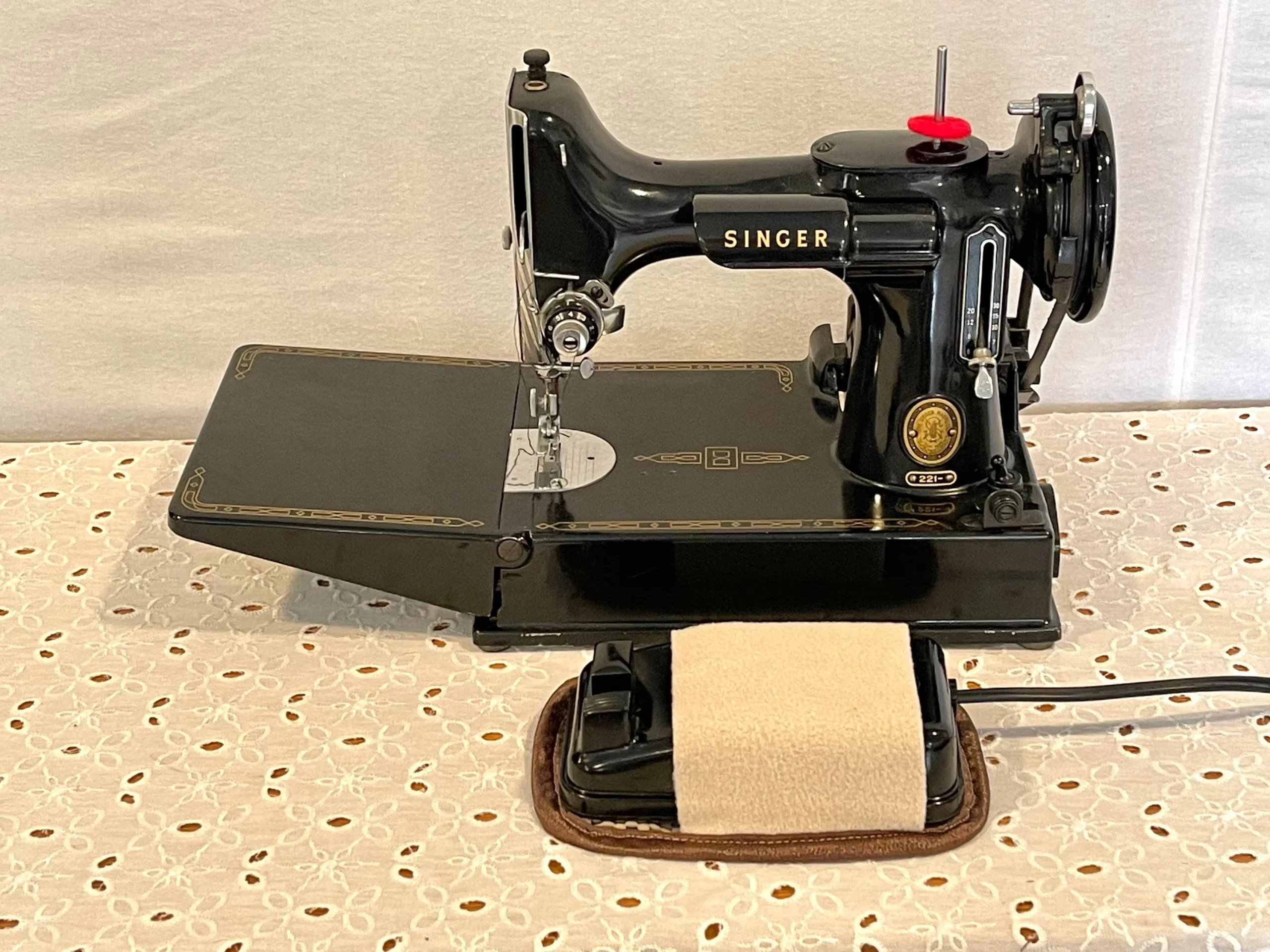
Singer 15
- The Singer 15 is typically hand cranked, though there are electric versions available too, which makes it popular with traditional home sewers.
- It has a reputation for being high-quality and easy to use, especially when undertaking a task such as quilting.
- The first Singer 15 was manufactured in 1879 and had a long production run, so it is easy to find replacement parts if necessary.
- They tend to sell between £300-£500.
- A video showing the Singer 15 in action can be found here.
Singer 281-1
- This machine is the only domestic heavy-duty machine that can sew through thick materials such as layers of leather and vinyl.
- It is ideal for those who undertake big crafting projects with thicker materials.
- The machine is heavy, so isn’t easy to carry about, but has a strong durability and replacement parts are easy to find.
- It can sew at a rate of 6000 stitches per minute, though it can only go in one direction. This means you have to sew back over your work.
- Because these machines are rather niche, they are one of the cheaper options on the list at under £100.
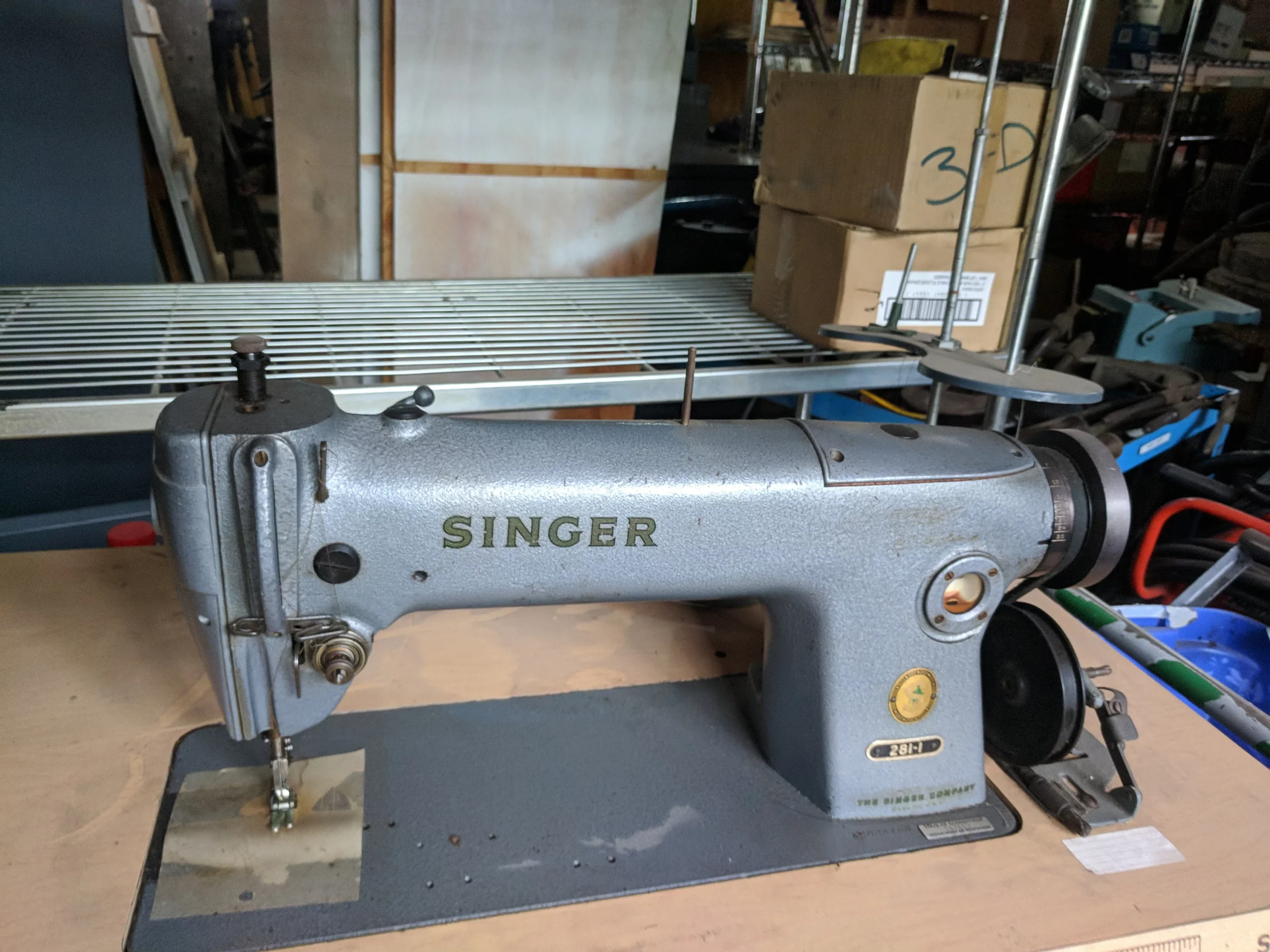
Kenmore 30 Stitch
- The Kenmore 30 Stitch is known for its ability to do a zig-zag stitch, as well as 29 other different types of stitch.
- This machine is newer than the others as it was produced in the 1980s.
- It is a quiet machine, so it is ideal if you dislike the noise of some of the older models and is easy to carry.
- A Kenmore sewing machine sells for around £50-£150.
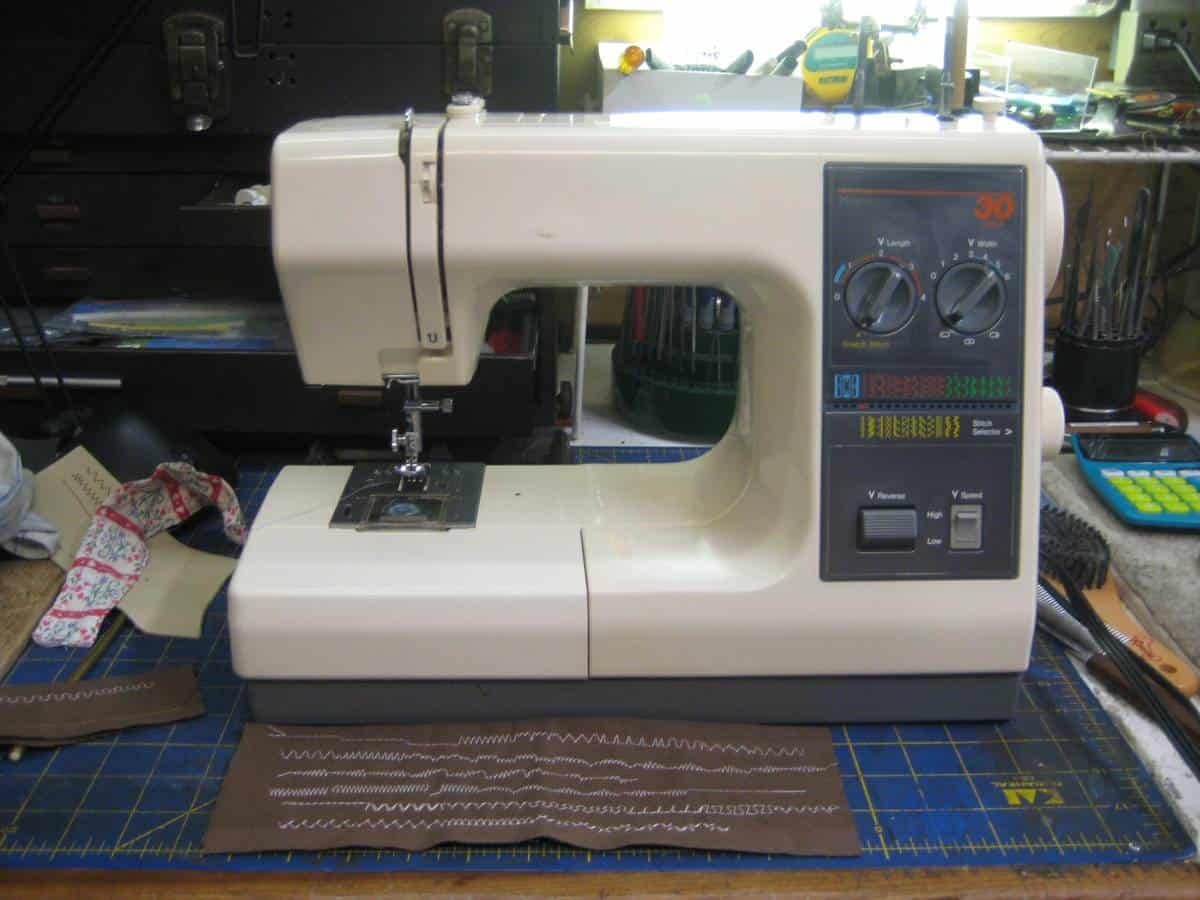
Singer 66
- The Singer 66 is widely considered to be the best vintage straight stitch sewing machine out there.
- It is made of cast iron and has recognisable red eye decals that single it out as being a Singer 66.
- It is easy to find despite its popularity as many versions were made and has a strong durability that helps the machine continue to work without issue even after several years.
- They are available in three different models: hand cranked, treadle, and electric.
- It features very precise sewing that extends to thicker fabrics.
- You can have many different Singer attachments for jobs like ruffling and darning that work with this machine.
- They currently sell for a range of prices depending on model and condition.
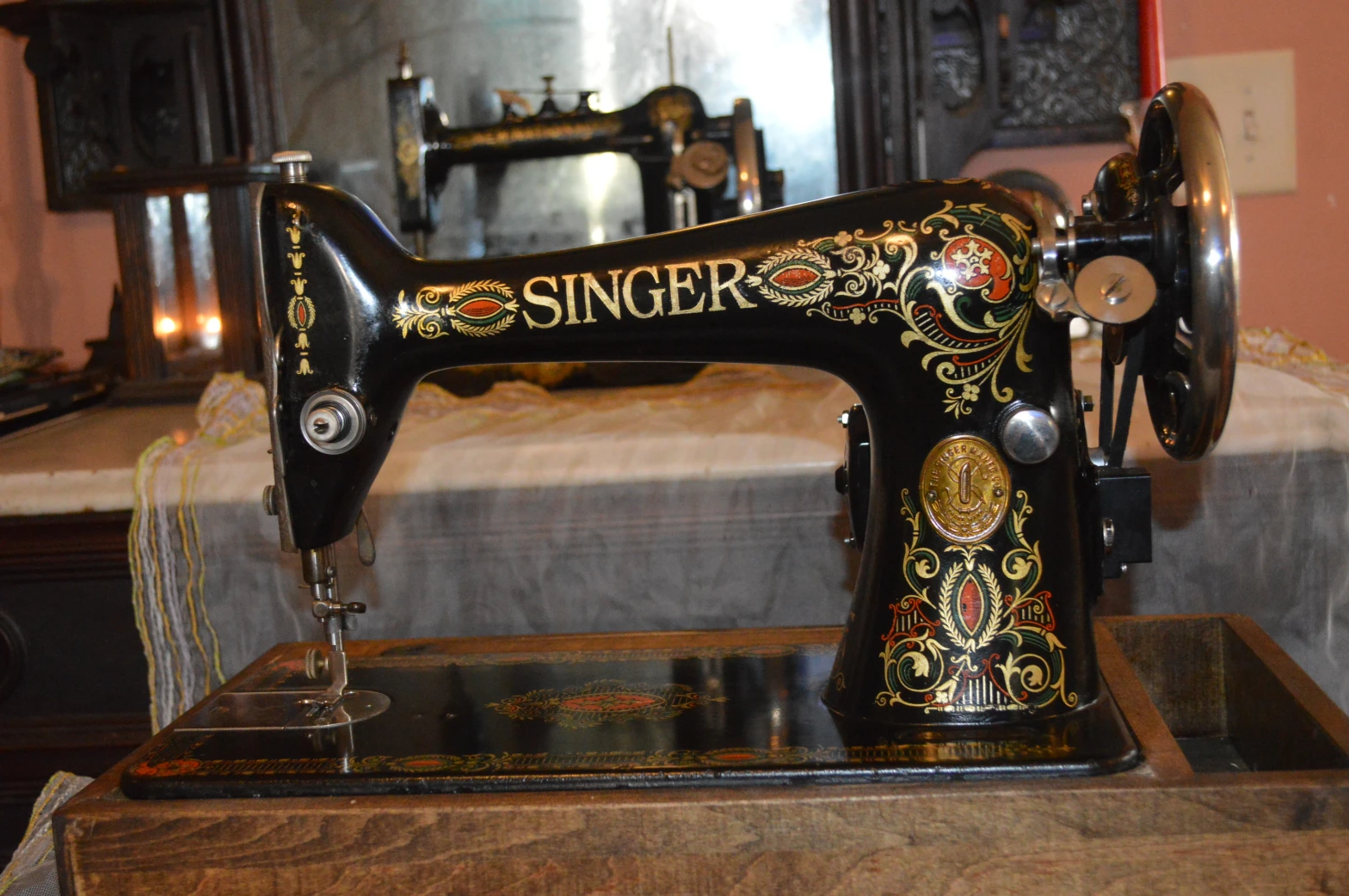
Bernina 930
- The Bernina 930 is another product of the 1980s and is one of the most expensive on the list.
- It can sew 26 different types of stitches and is most ideal for sewers who want to complete simple tasks, quilting, or embroidering.
- It has many positive reviews about the quality of the stitching and the longevity of the machine.
- They sell for around £400-£600.
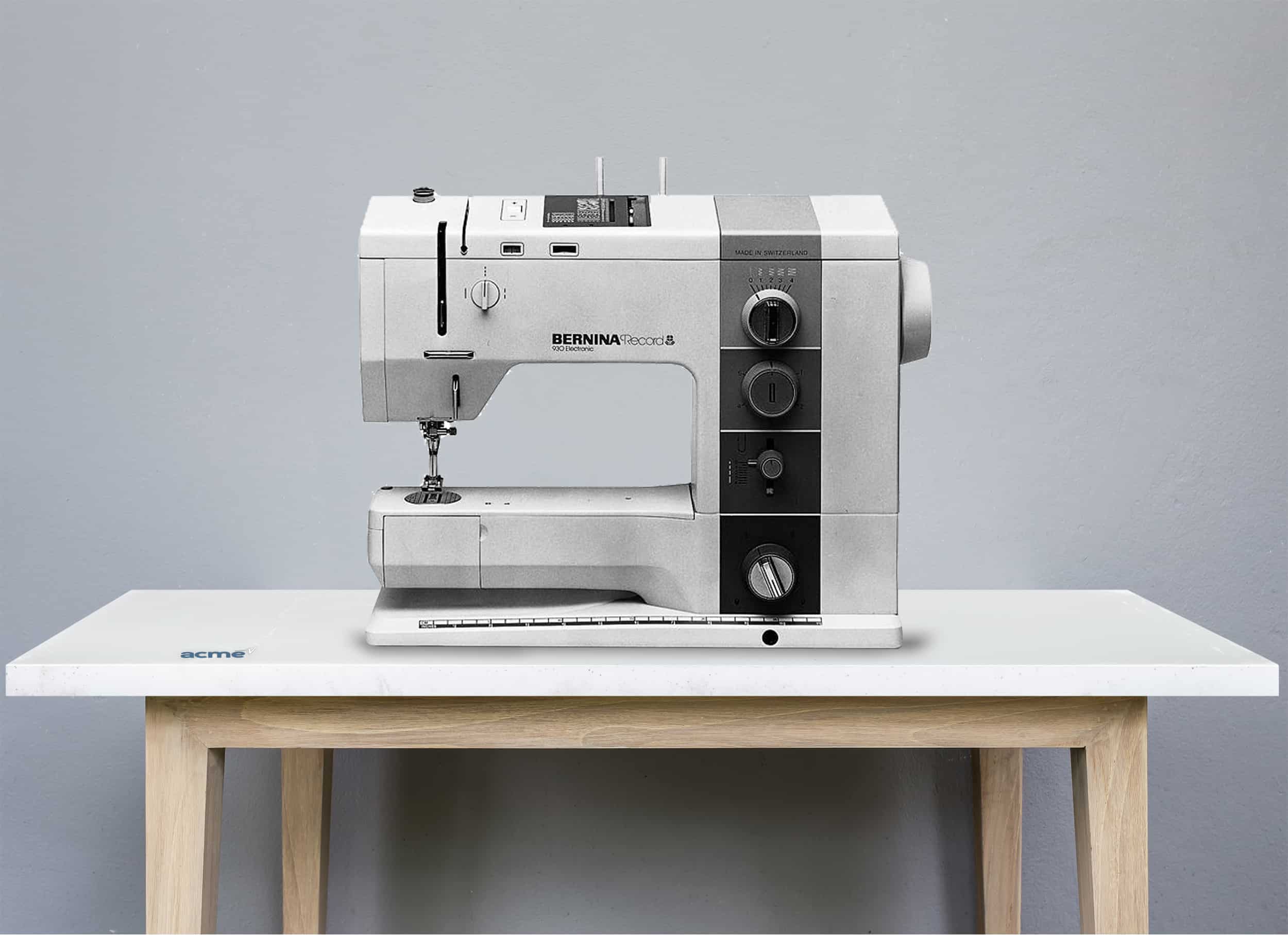
Singer 201
- Saving the best until last, the Singer 201 was voted the best vintage sewing machine by the International Sewing Machine Collectors Society.
- This is down to the quality of the machine, how easy it is to operate, the fact that it can do 1100 stitches every minute working at full speed, and the diversity in that it is available in both electric and non-electric models.
- It is very quiet and has a presser foot to activate the needle.
- They are easy to find as they were produced in big quantities from the 1920s until the 1950s and are easy to repair if something did go wrong.
- These machines sell for anywhere between £150-£500.
Tips for Buying a Vintage Sewing Machine
When you are buying a vintage sewing machine either online or from an in-person dealer, there are a few key things to look out for:
- Look closely at the sewing machine to detect any damage or missing parts that could affect the running of the machine.
- Try to get a vintage machine that is still popular today, as it will be easier to get replacement parts if necessary.
- The needle should go up and down without issue when activated.
- The bobbin case should turn either clockwise or anti-clockwise smoothly alongside the motion of the handwheel.
- If it has a hand crank, the wheel should rotate without stiffness and should be easy to turn.
- Refurbished machines are obvious because they have parts that seem odd or out of place and can be difficult to replace. Aim to get a genuine unblemished machine if possible.
- Make sure that the machine is as advertised and watch out for any hidden damage or scams if you are buying from a seller on a platform such as eBay.
- Check for a serial number and enter it into the serial number database. Singer has one which you can find here.
Conclusion
In summary, the best vintage sewing machines you should buy are produced by well-known and trustworthy brands. The three main brands are:
- Singer
- Kenmore
- Bernina
Any machine produced by these three in particular is always going to be a reliable sewing companion that can meet your crafting needs. Replacement parts should be easy to find, and they have an inexpensive to moderate price tag depending on the model you get.
We hope you have enjoyed this article and now know what to look for when purchasing a vintage sewing machine. Please leave any questions or comments below and we will get back to you as soon as possible.
